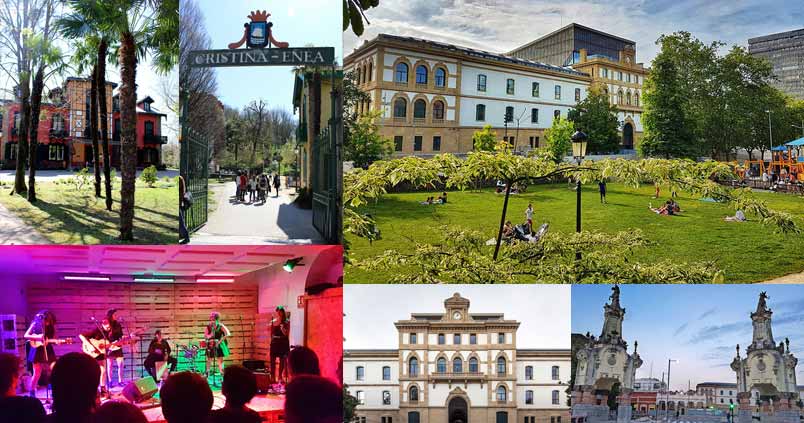Egia
The perfect fusion of art, culture, nature and the avant-garde
Egia is a neighbourhood of contrasts which is located only a short distance from the centre of San Sebastián. It has bars where you can enjoy a fantastic pintxo-pote, a park with ornamental ponds where you will come across peacocks, and an avant-garde cultural centre in the form of the Tabakalera in addition to a vibrant cultural life which is filled with concert halls and theatres. And there’s still so much more after that.
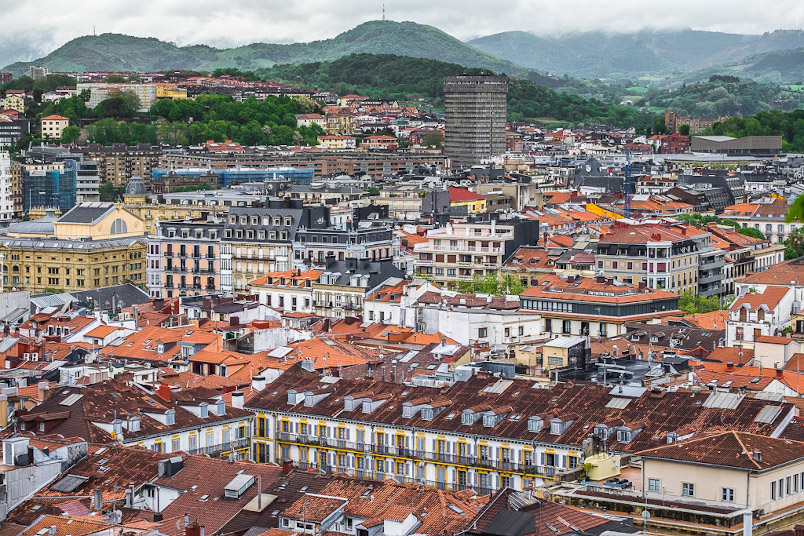
If there’s one thing that Egia has in abundance, it’s personality. Culture, nature, art and music all come together to breathe life into one of the most fashionable neighbourhoods in San Sebastián. Some call it the SoHo of Donostia, while others compare it to Greenwich Village, but if one thing is certain, it is that Egia is an area that is well worth discovering.
Map and places of interest
- 1. Train and Bus Station
- 2. Tabakalera and Kutxa Kultur Artegunea
- 3. Atotxa Tower
- 4. Cristina Enea Park
- 5. Polloe Cemetery
Dive deeper into egia, the neighbourhood of fashion
Start your visit to Egia with a stroll along the Paseo Urumea path which runs beside the river that divides the city in two. Go deeper into the neighbourhood by passing through the underground tunnel under the railway station, but first take a moment to admire its main entrance, a replica of the old entryway which from 1906 onwards welcomed the Donostians and visitors that arrived in San Sebastián by train from different parts of the country.
Crossing through this subterranean passage, you will find yourself in front of a perfect fusion of the traditional and the contemporary: the Tabakalera. The former tobacco factory has now been converted into a focal point for contemporary art and you can wander through its halls and admire the artworks that are displayed there. We recommend going up to the rooftop terrace: there are incredible views of the city from the lookout area..
And now that you are in the heart of Egia, this is the perfect time to start discovering the streets and hidden corners of this most quirky of neighbourhoods. Just by the side of the Atotxa Tower, the only skyscraper in Donostia, you can visit the site where the Atocha Stadium used to be located, with this stadium being the temple of League Champions Real Sociedad. Here, the legendary Arconada, Zamora, Satrústegui and López Ufarte faced down figures such as Maradona, Kevin Keegan, Cruyff and Butragueño.
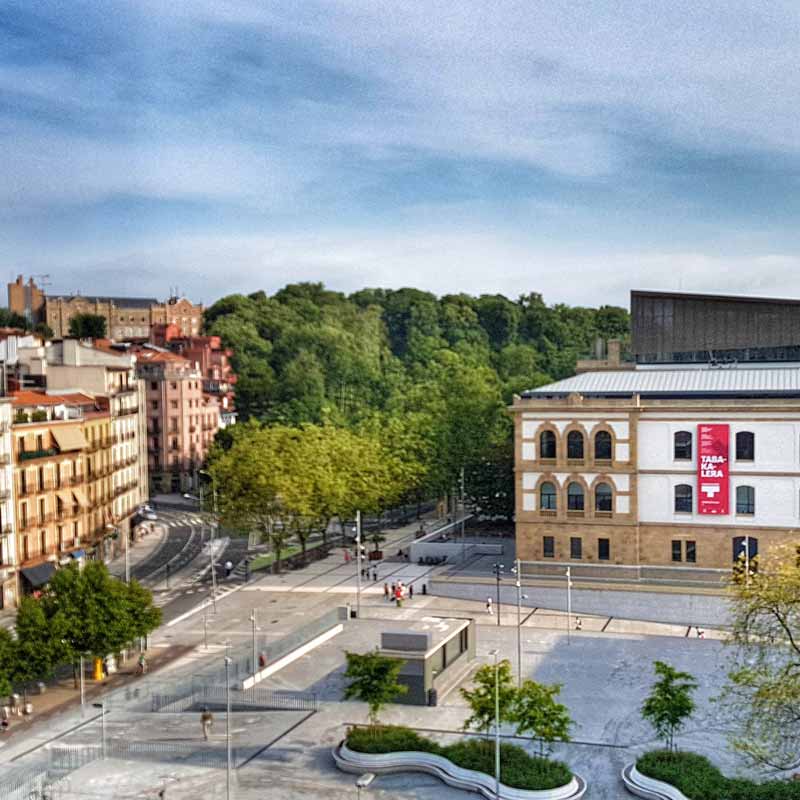 The Tabakalera with the Cristina Enea Park in the background
The Tabakalera with the Cristina Enea Park in the background
DonosteaserBlogger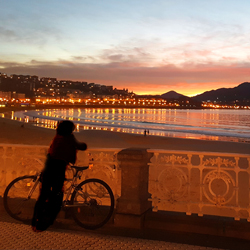
DISCOVER THE BEST RECOMMENDATIONS ABOUT EGIA FROM OUR BLOGGERS Bloggers
Cristina Enea Park
A verdant paradise with a palace, a pond and animals out in the open
If you wander through Egia and find yourself in a little piece of paradise, your eyes are not deceiving you: this is Cristina Enea Park, one of the most iconic green spaces in the city. The park used to belong to the Duke of Mandas but it is now open for everyone to enjoy.
Wander through its pathways, flanked by a whole variety of plant and animal species, rest next to the duck pond and enjoy the beauty of the peacocks living in the park. And surely such a gorgeous location is deserving of a palace? Built in the Basque style, Cristina Enea Palace was once home to the Dukes of Mandas, while it now houses the Cristina Enea environmental centre and displays numerous exhibitions throughout the year.
If you are travelling with children, this location is a must-see./p>
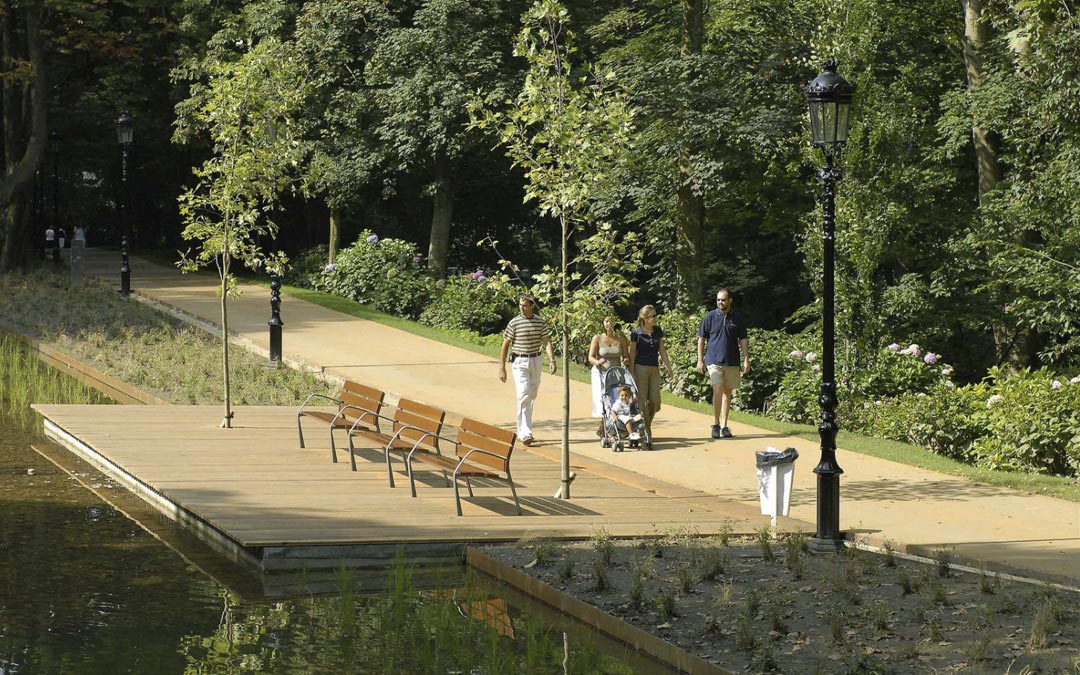 If you are travelling with children, this location is a must-see
If you are travelling with children, this location is a must-see
Tabakalera: a reference in Art and Contemporary culture
A symbol of the Belle Époque, the former tobacco factory has now been reinvented as the Tabakalera International Centre for Contemporary Culture.
What was once the workplace of hundreds of Donostian women is now the city’s iconic home of contemporary art. A meeting point for both local and international artists, its different exhibition spaces are filled throughout the year with music, dance and theatrical performances, cinema screenings, exhibitions and many different cultural events.
If you are passionate about art and culture, you should not miss out on the opportunity to stay in Tabakalera. The centre has a hotel which conceals some very special decorative features within its walls.
Don’t forget to check the cultural calendar, because no matter when you visit the city, Tabakalera is sure to have something special in store for you. And even if this is not the case, it is worth paying a visit regardless and going up to the fourth-floor café to enjoy some different views of the city.
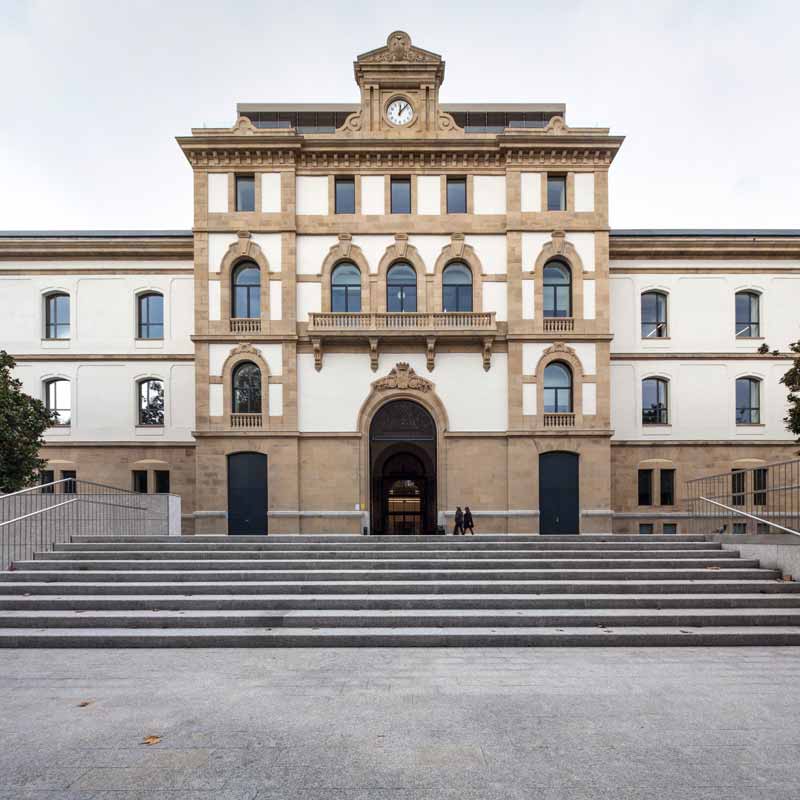 The main façade of the Tabakalera in Egia.
The main façade of the Tabakalera in Egia.
Kutxa Kultur Artegunea
Kutxa Kultur Artegunea, devoted to the art of photography, located in Tabakalera, has a surface area divided into two floors of an industrial character, with a sole configuration, and brings the public closer to international public art as well as the local variety.
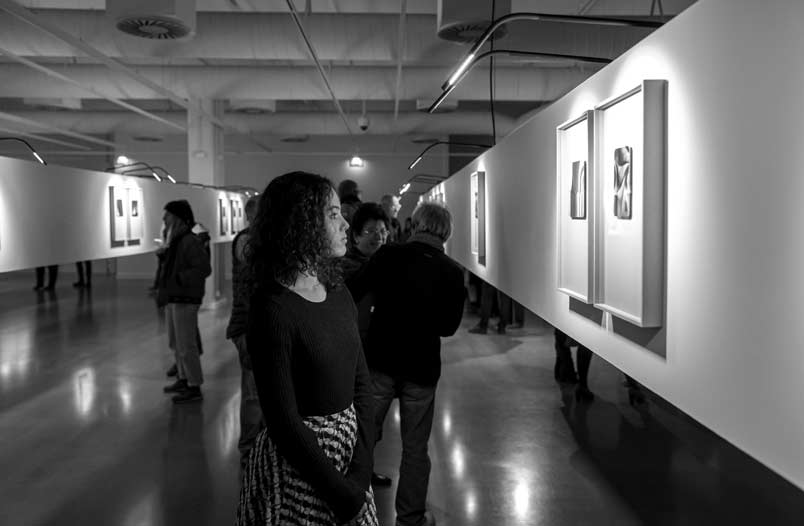 Photo exhibition in Kutxa Kultur Artegunea
Photo exhibition in Kutxa Kultur Artegunea
Train and bus stations
Whether you are travelling by train or bus from Madrid, or coming from Barcelona, Bilbao, Pamplona, Loiu Airport or any other location in Spain, all roads lead to the same point. The bus station and the Estación del Norte train station sit side by side in Egia, a stone’s throw from the city centre.
As soon as you step out of either station, you will see that you are a matter of metres from the centre of San Sebastián. Just cross the bridge over the Urumea River and you will come to the romantic area of the city with the Kursaal Palace in the background. This is the perfect place to start enjoying the capital of Gipuzkoa.
Polloe cemetery
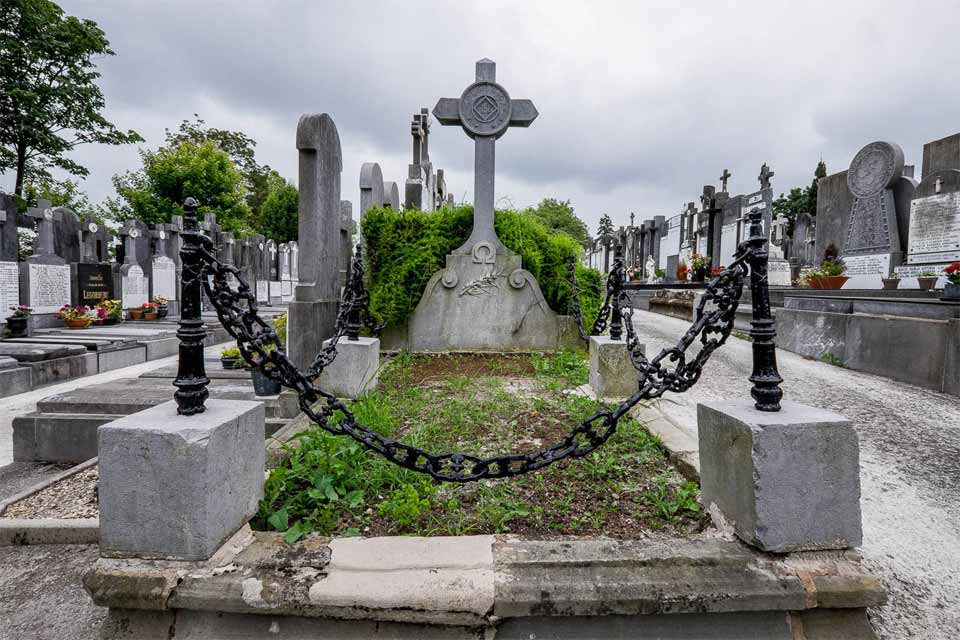 A monument to the victims of the 1893 Urbieta Street fire in Polloe Cemetery
A monument to the victims of the 1893 Urbieta Street fire in Polloe Cemetery
Polloe Cemetery is an important part of the city's cultural heritage. Inaugurated in 1878, it has a special artistic value which comes from the architecture of its pantheons, Neo-Classical chapels, mausoleums and niches, all which have been created by a variety of different artists.
This is the resting place of notable figures such as dukes, politicians, writers and painters. Some of the most famous figures include Luis Miner, Clara Campoamor and Rafael Ruiz Alberdi. Pay a visit to the Polloe Cemetery website or join one of the guided visits organised by Oh My Walk! if you want to learn more about the figures that lie in eternal rest here and to discover the most striking pantheons.
Walking through the pathways of the cemetery is a romantic yet melancholy experience that is linked to religion but also to the history of the Basque Country, showing elements that represent our collective culture. Enjoy the peaceful environment of this location and discover more about the history of the city among the headstones of Polloe Cemetery.
Where to eat in Egia
As we have seen, the neighbourhood of Egia is filled with its own personality: it is an area of contrasts and variety, and this is no less true of its culinary offerings. With several vegetarian and Asian restaurants, you can enjoy different culinary experiences in this neighbourhood.
And if you like theatre or live music, Egia is the neighbourhood for you. With a selection of concert halls and cafés where microtheatre performances take place, you can create a splendid evening out which includes a dinner in any one of the restaurants in this neighbourhood.
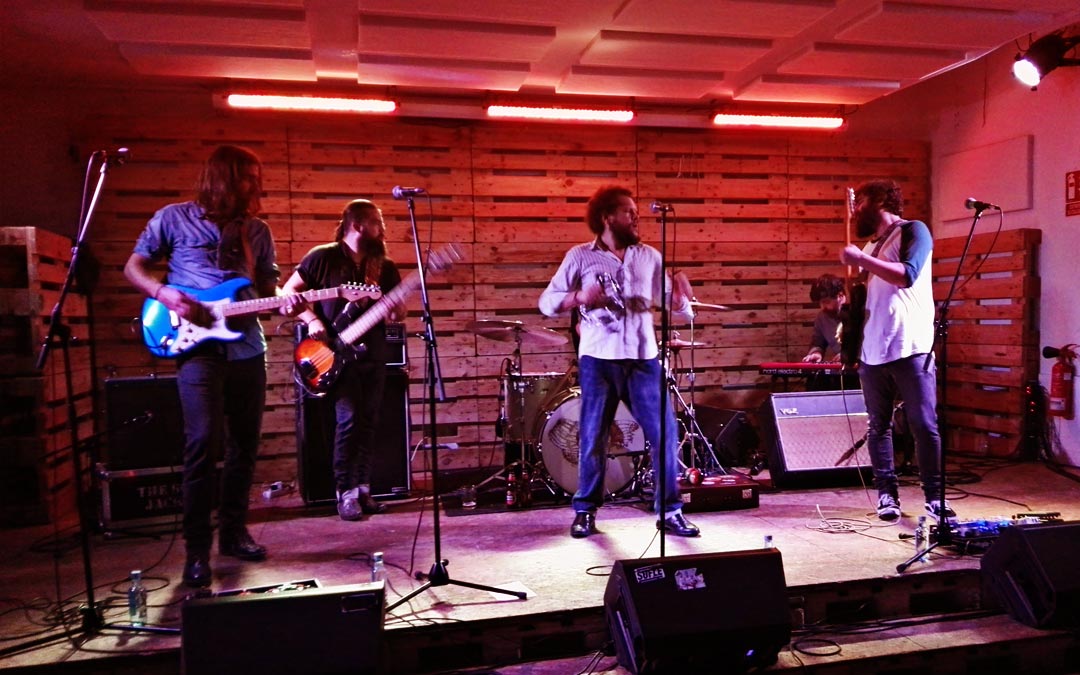 One of the concert halls in Egia, where local and international artists perform
One of the concert halls in Egia, where local and international artists perform
And, of course, there is also the pintxo-pote. On Fridays, take the opportunity to visit the different bars in the neighbourhood and enjoy the best pintxos in the best atmosphere in Donostia.
How to get to Egia
The best way of reaching Egia is on foot or by bicycle. The neighbourhood is less than a kilometre from the city centre: simply walk along the bank of the Urumea River until the train station, cross through the underground tunnel under the train lines and you will arrive in Egia, right next to the Tabakalera.
City buses can also take you to Egia. Lines 09 and 45 will bring you to the heart of the neighbourhood, and if you'd rather visit the area at night, you can take Dbus b3.

